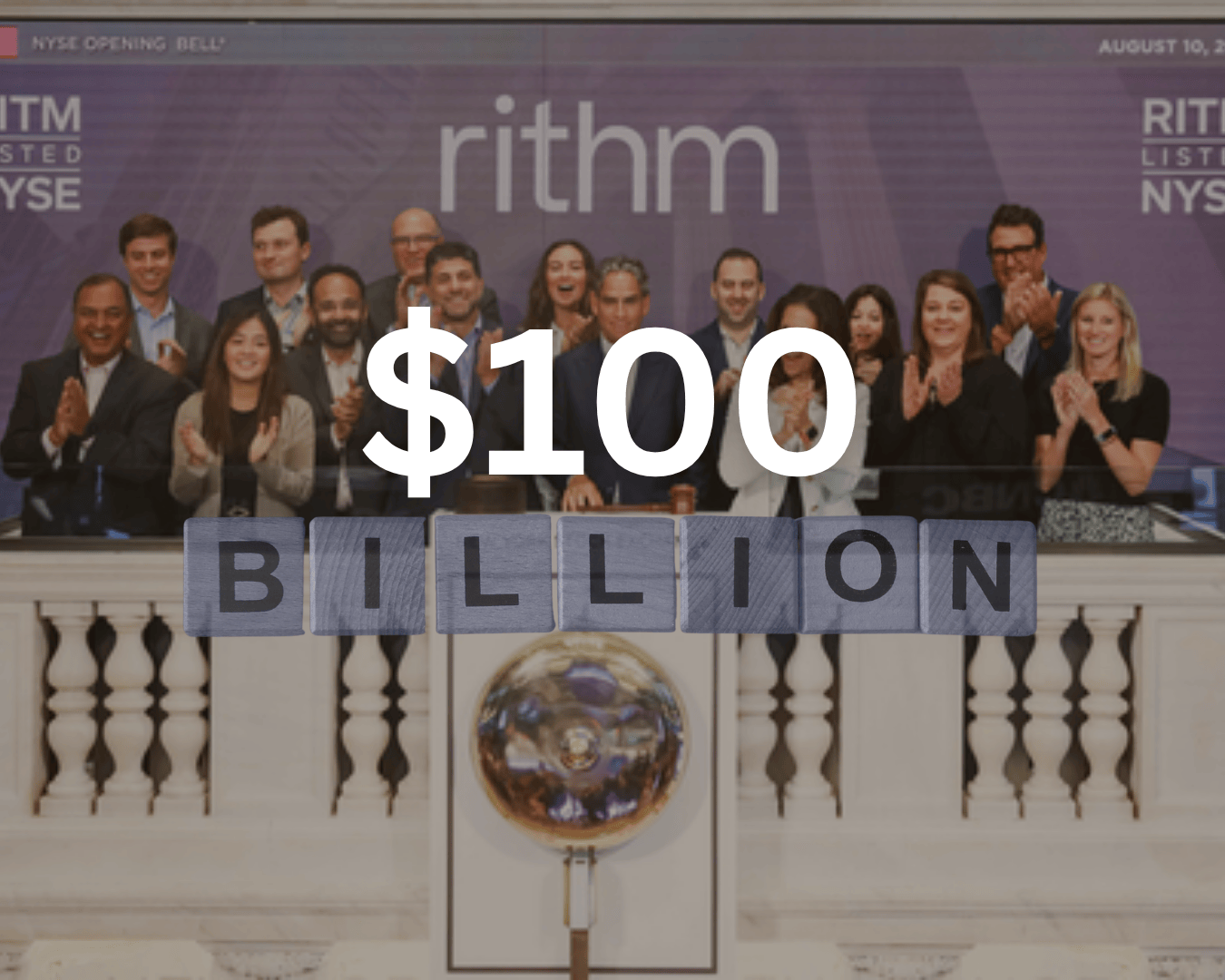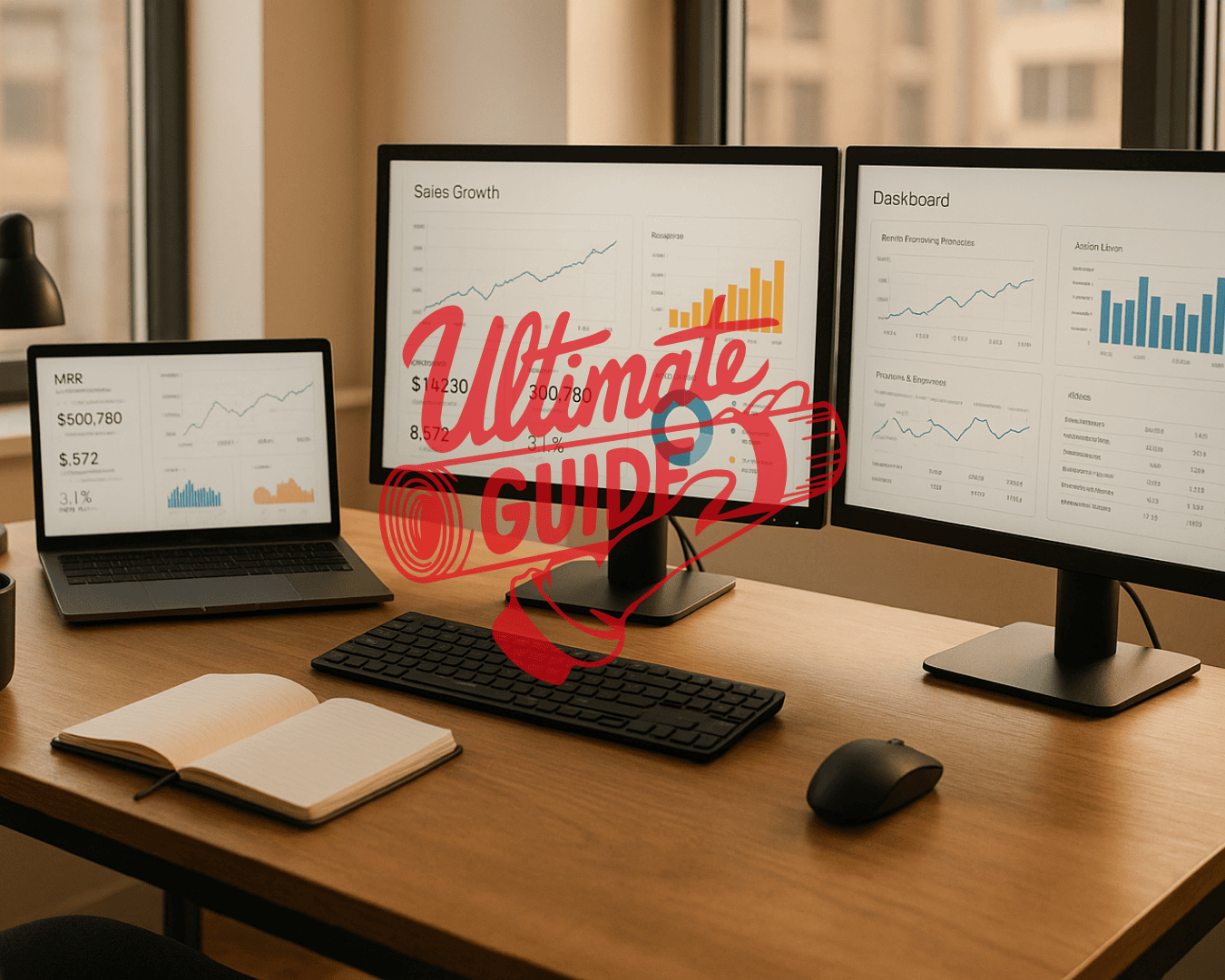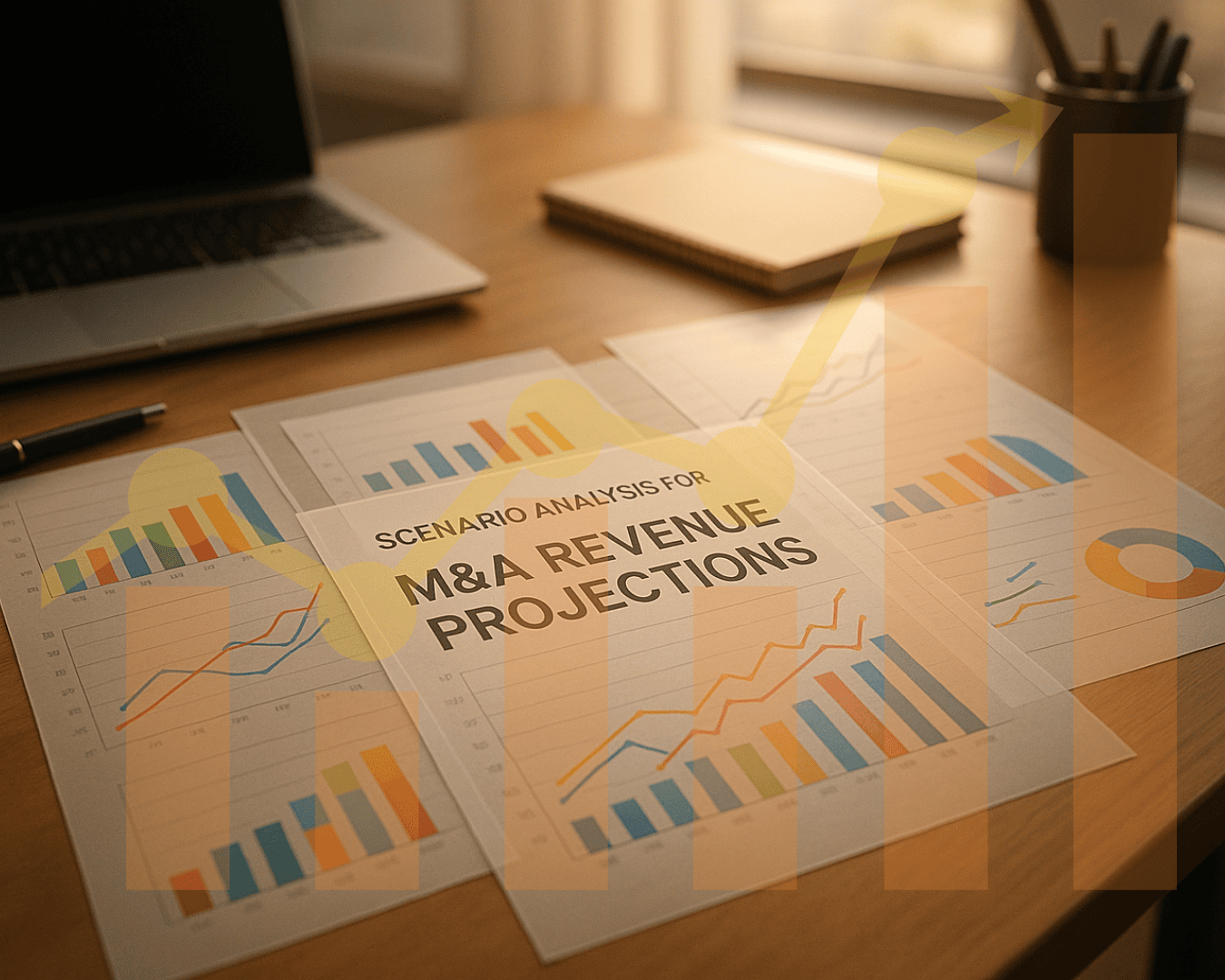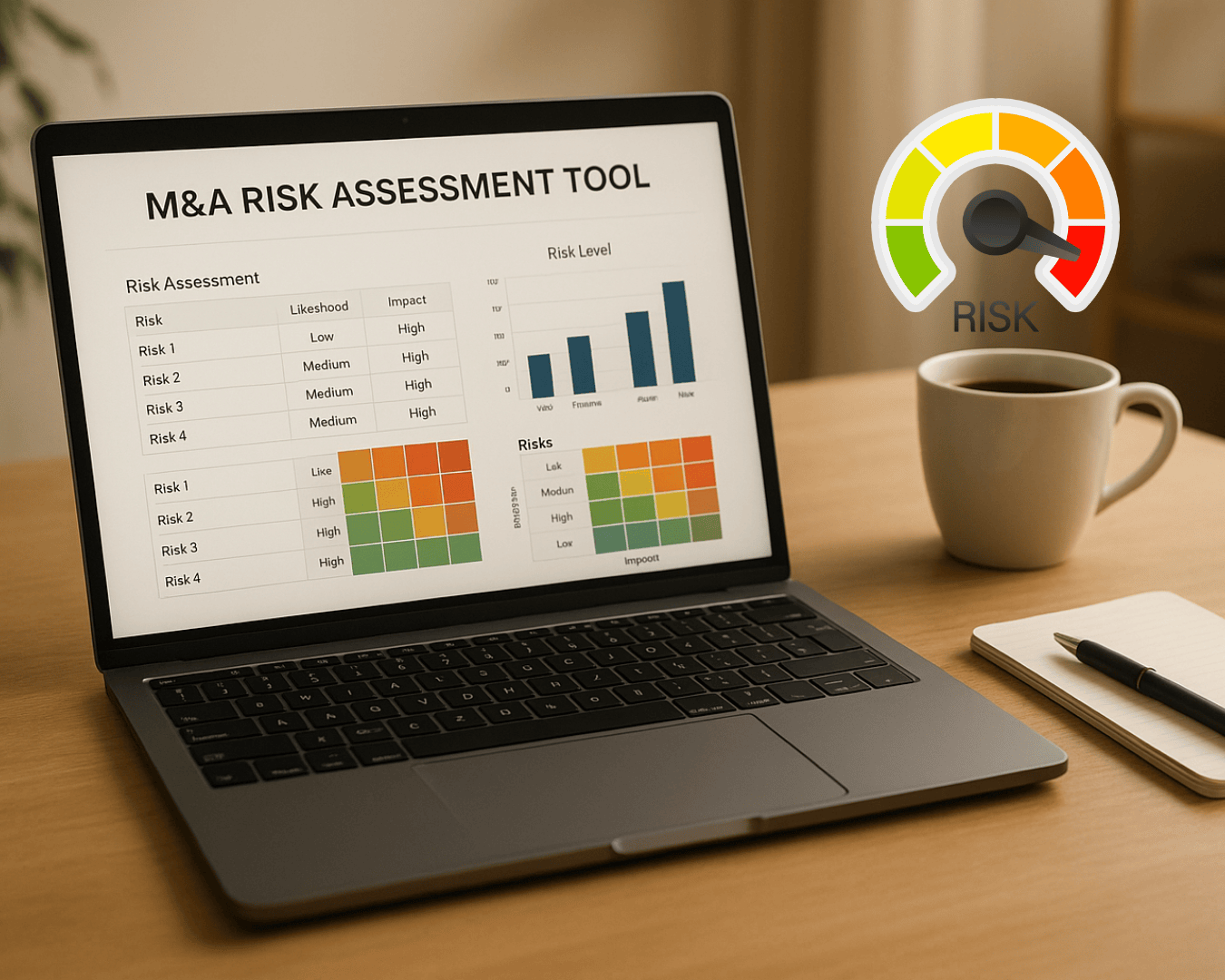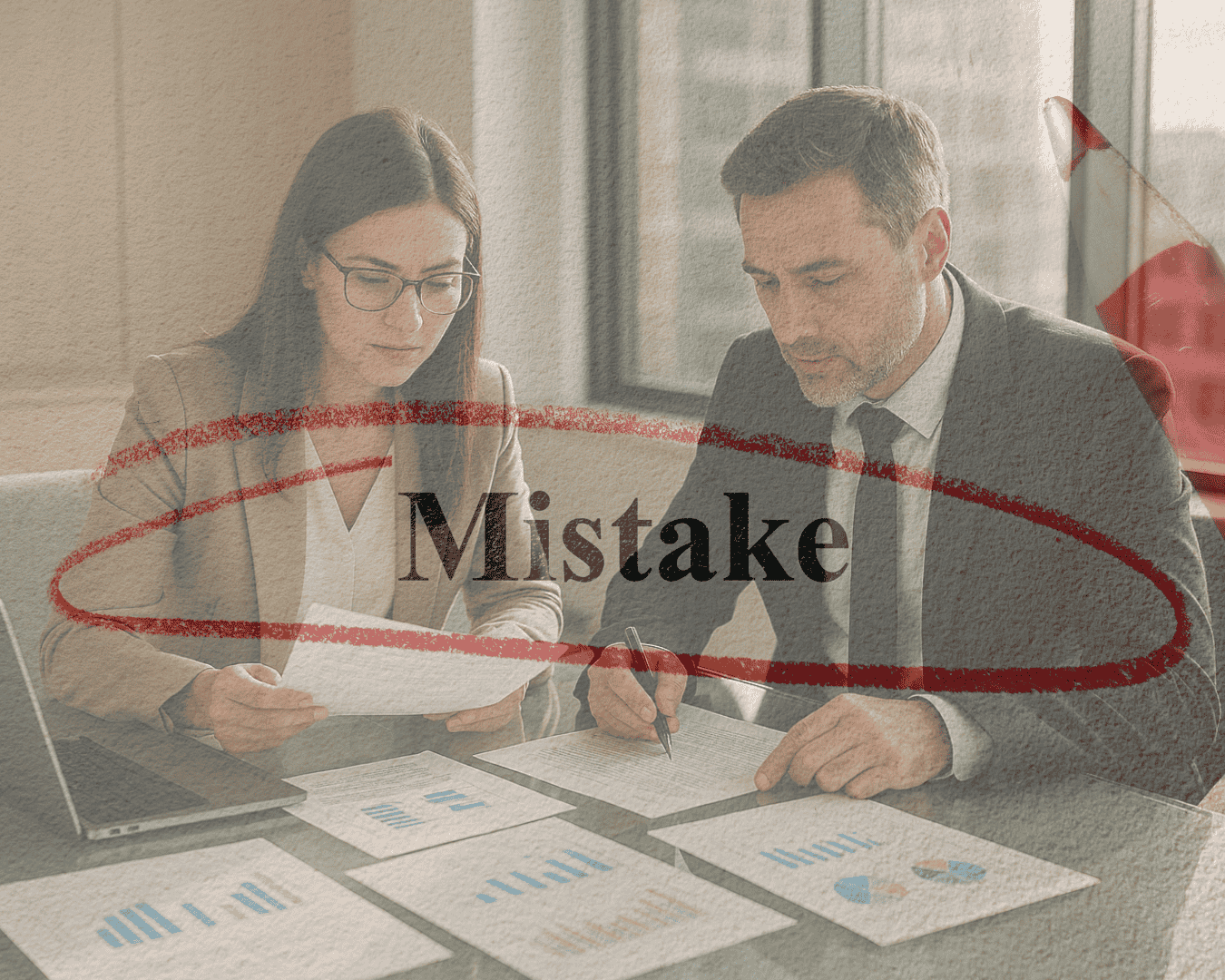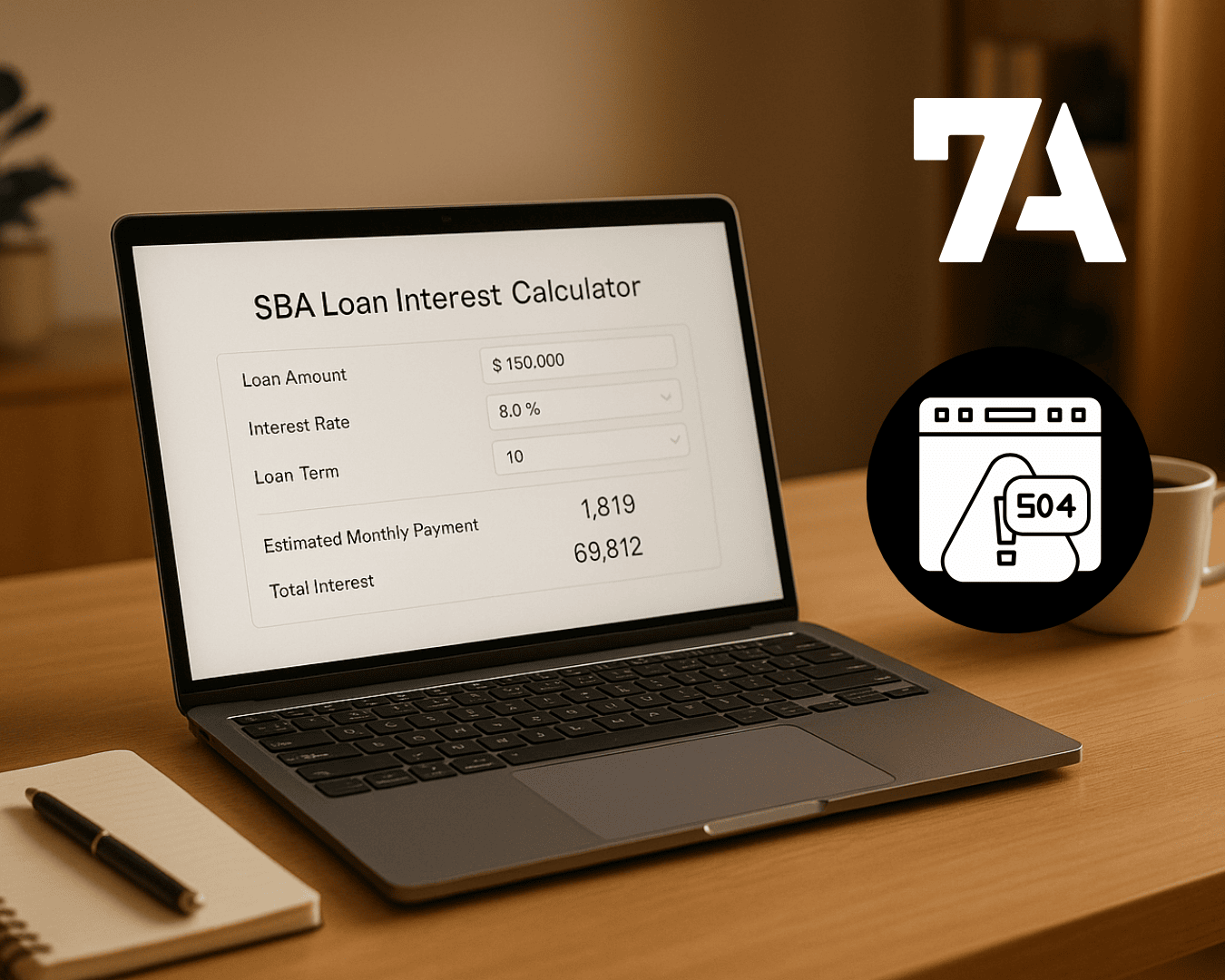EBITDA is a critical metric for valuing small and medium-sized businesses (SMBs) in the U.S. It simplifies comparisons by focusing on core profitability, excluding financing, taxes, and non-cash expenses. Valuations often rely on multiples of adjusted EBITDA, typically ranging from 3x to 6x, depending on factors like growth, margins, and risk.
Here are five key benchmarks for evaluating SMBs using EBITDA:
- EV/EBITDA Multiples: A common method to price businesses; influenced by industry, size, and risk.
- EBITDA Margins: Higher margins usually result in better valuation multiples, signaling efficiency.
- TTM vs. Multi-Year EBITDA: Buyers often prefer multi-year averages to smooth volatility, while sellers may highlight recent performance.
- Growth, Customer Concentration, Revenue Stability: Consistent growth, diversified clients, and steady income streams reduce risk and improve multiples.
- EBITDA-to-Free Cash Flow (FCF) Conversion: High FCF conversion rates indicate stronger cash generation, directly impacting valuation.
Understanding these benchmarks ensures a clearer picture of a business’s value and cash flow potential. Clean financials and accurate adjustments are essential for achieving better valuations.
1. EV to EBITDA Multiples for Small Private Companies
Relevance to SMB Valuation
Building on the importance of EBITDA, let's explore how EV/EBITDA multiples play a role in valuing small and medium-sized businesses (SMBs) in the United States. The EV/EBITDA multiple compares a company's enterprise value (EV) - which includes market capitalization, debt, and cash adjustments - to its earnings before interest, taxes, depreciation, and amortization (EBITDA). This metric is a popular tool for assessing SMB valuations. Unlike public companies, private SMBs often face a liquidity discount, leading to more conservative valuations. The EV/EBITDA multiple provides a straightforward way to gauge a company's pricing.
Impact on EV/EBITDA Multiples
Several factors influence the EV/EBITDA multiple that an SMB might achieve. Industry type is a major determinant - businesses in tech-enabled services often command higher multiples, while more traditional industries may see lower benchmarks. Smaller companies tend to carry higher risks and attract fewer buyers, which can compress their multiples. Additionally, businesses heavily reliant on their owners typically receive lower multiples compared to those with professional management structures in place.
Connection to Profitability and Cash Flow
The quality of EBITDA serves as a key indicator of cash flow reliability. EV/EBITDA multiples indirectly reflect a company's ability to generate consistent cash flow. Buyers often view EBITDA as a stand-in for pre-debt cash flow, making it especially valuable for businesses with recurring revenue models or long-term contracts. These factors help convert earnings into dependable cash flow, increasing a company's attractiveness to potential buyers.
Adjustments for Industry, Size, and Risk
Buyers often fine-tune their valuation multiples based on specific risks. Factors like customer concentration, geographic reach, and capital intensity can significantly impact the EV/EBITDA multiple. For instance, businesses that rely heavily on a single customer or operate in less dynamic markets may face downward adjustments. On the other hand, companies located in large metropolitan areas with access to a broader buyer base often achieve higher multiples. Broader market conditions, such as rising interest rates that increase financing costs, can also temporarily lower the multiples buyers are willing to pay.
2. EBITDA Margin Levels That Drive Higher Multiples
Relevance to SMB Valuation
When it comes to valuing small and medium-sized businesses (SMBs), EBITDA margins offer a clear window into how efficiently a company operates. Buyers often rely on these margins as a measure of operational health and management effectiveness, especially since they can reveal more about the business than raw dollar figures.
The connection between EBITDA margins and valuation multiples becomes especially critical when comparing businesses of varying sizes within the same industry. For example, a business generating $2 million in revenue with a 25% EBITDA margin is likely to earn a higher valuation multiple than a larger company with $5 million in revenue but only a 10% margin. Why? Because stronger margins often signal better operational efficiency, regardless of revenue size. Let’s dive into how these margins influence EV/EBITDA multiples across sectors.
Impact on EV/EBITDA Multiples
Higher EBITDA margins translate into better valuation multiples. Companies that outperform their industry’s average margins tend to secure premium multiples, as they demonstrate stronger management and a competitive edge. For instance, service-based SMBs with margins above 20% can often achieve multiples 1.5 to 2 times higher than those of competitors with single-digit margins.
In manufacturing, the dynamic shifts slightly. Margins above 15% are considered strong and can significantly enhance valuation multiples. However, it’s not just about hitting high margins - it’s about maintaining them. Buyers place a premium on businesses with consistent, sustainable margins over those with fluctuating profitability.
Connection to Profitability and Cash Flow
EBITDA margins don’t just reflect profitability - they also reveal a company’s ability to generate cash flow. Businesses with stronger margins, particularly those above 20%, often convert a greater proportion of EBITDA into usable cash flow. This is particularly important during due diligence, where buyers scrutinize whether reported EBITDA truly translates into cash available for debt repayment and owner distributions.
Consistency is key here. Companies that sustain high margins - thanks to competitive advantages like proprietary processes, long-term contracts, or specialized expertise - are more likely to maintain profitability over time. On the other hand, businesses that achieve high margins through temporary cost-cutting or one-time gains may struggle to sustain those levels, which can deter buyers.
Adjustments for Industry, Size, and Risk
While EBITDA margins play a central role, factors like industry norms, company size, and risk also influence valuation. For instance, technology services firms with margins below 25% might face lower multiples, while a retail business exceeding the industry standard of 8-12% margins could earn a premium. Smaller businesses, in particular, often need higher margins to offset their lack of scale and the added risks they face.
Geography also plays a part. Companies in major metropolitan areas often command higher multiples due to access to more buyers. Conversely, businesses in lower-cost regions with standout margins compared to local competitors can attract interest from buyers looking for efficiency gains in new markets.
Margins, when viewed through these lenses, become a powerful tool in understanding and maximizing SMB valuations.
3. Trailing 12 Months vs Multi-Year EBITDA and Quality of Earnings
Relevance to SMB Valuation
When evaluating small and medium-sized business (SMB) valuations, it’s essential to understand the distinction between trailing 12 months (TTM) EBITDA and multi-year averages. Buyers and sellers often approach these metrics from different angles. Buyers usually focus on TTM EBITDA since it reflects the most recent performance and can highlight current momentum. On the other hand, sellers may prefer multi-year averages to smooth out any volatility, especially if recent results fall short of historical trends.
This difference in perspective is particularly noticeable in smaller businesses, where annual results can swing dramatically due to factors like a single large contract, seasonal trends, or decisions made by the owner. For instance, a landscaping company might report $800,000 in TTM EBITDA, while its two-year average is only $600,000. This could raise questions for buyers about whether the recent spike is sustainable or just a temporary boost.
A Quality of Earnings (QoE) review is often used to bridge this gap. This formal analysis digs into financial statements to adjust for one-time items, normalize owner-related expenses, and separate recurring operations from temporary fluctuations. The result is an "adjusted EBITDA", which provides a more accurate foundation for negotiations. This adjusted figure becomes central to determining valuation multiples and cash flow expectations.
Impact on EV/EBITDA Multiples
The choice between TTM and multi-year EBITDA has a direct impact on the valuation multiples buyers are willing to apply. Buyers often prefer multi-year averages to counter sellers who might emphasize a strong recent TTM performance. For businesses with volatile earnings, this approach can lower the valuation base by 15–30%.
Take the example of an HVAC services company with a TTM EBITDA of $2.0 million and a three-year average of $1.6 million. After QoE adjustments reduce both figures by 10%, the adjusted TTM EBITDA becomes $1.8 million, while the three-year average falls to $1.55 million. A buyer concerned about customer concentration might apply a 5.5× multiple to the adjusted three-year average, resulting in an enterprise value of $8.5 million. In contrast, a buyer confident in the company’s stability - perhaps due to recurring maintenance contracts and low employee turnover - might apply a 6.0× multiple to the adjusted TTM, yielding an enterprise value closer to $10.8 million.
For small businesses, EBITDA multiples typically range between 3× and 6×. Sellers aiming for the higher end of this range need to demonstrate that any recent improvements are the result of lasting changes, not one-off events or temporary gains.
Connection to Profitability and Cash Flow
EBITDA adjustments are just one piece of the puzzle - cash flow performance often tells a more complete story. The debate between TTM and multi-year EBITDA becomes even more nuanced when cash flow conversion is factored in. For example, a business showing strong TTM EBITDA growth might still be burning cash due to rising working capital needs or deferred maintenance expenses. That’s why QoE reviews often go beyond EBITDA to examine cash-impacting factors like capital expenditures, working capital changes, and debt service obligations.
Sustainable EBITDA improvements - those driven by recurring contracts, operational efficiencies, or permanent cost reductions - indicate stronger future cash flow. However, gains stemming from deferred spending, temporary price hikes, or one-time revenue recognition can signal potential cash flow challenges down the road.
Savvy buyers use a combination of TTM, multi-year averages, and normalized "pro forma" EBITDA from QoE analysis to establish valuation ranges and test assumptions about sustainability.
Adjustments for Industry, Size, and Risk
The size, industry, and risk profile of a business also influence how EBITDA is evaluated. Larger companies with diversified revenue streams and predictable cash flows tend to earn higher multiples and more credit for recent improvements. Smaller, owner-dependent businesses, on the other hand, often face greater scrutiny and rely more heavily on multi-year averages.
Industry dynamics play a key role as well. In sectors like construction or consulting, where revenues are project-based and naturally fluctuate, buyers often lean on multi-year averages to smooth out the peaks and valleys. Conversely, businesses with recurring revenue models - such as software companies with low churn and clear growth metrics - are more likely to benefit from TTM uplifts, especially when supported by a thorough QoE review.
Geographic location can also impact valuation. Companies in major metropolitan areas often command higher multiples, while those in rural or niche markets may need a stronger multi-year track record to achieve similar valuations.
For sellers, the message is clear: prepare a sell-side QoE analysis to validate TTM EBITDA, highlight sustainable adjustments, and document any seasonality or cyclical patterns. Platforms like Clearly Acquired provide tools and advisory services to streamline this process, helping sellers substantiate their adjusted EBITDA and approach negotiations with confidence.
4. Growth Rate, Customer Concentration, and Revenue Stability
Relevance to SMB Valuation
When it comes to valuing small and medium-sized businesses (SMBs), growth rate, customer concentration, and revenue stability are major factors that influence perceived risk. Unlike larger corporations that often enjoy diversified revenue streams, SMBs are more vulnerable to risks tied to customer concentration. This dependency can weigh heavily on valuations, as any change in key customer relationships could significantly impact the business. These elements feed directly into EBITDA multiples and cash flow evaluations, as outlined earlier.
Revenue growth patterns provide valuable insights into market demand and competitive strength. For instance, a manufacturing company with consistent annual growth demonstrates strong market positioning, while erratic growth raises red flags about sustainability and long-term viability.
Revenue stability, meanwhile, speaks to both predictability and resilience. Businesses with recurring revenue models, long-term contracts, or high switching costs for customers tend to have more stable income streams. A company with a subscription-based or recurring revenue model, for example, is often seen as more reliable than one relying on sporadic, project-based work.
Impact on EV/EBITDA Multiples
The influence of these risk factors on valuation multiples is both direct and substantial. Companies with steady growth are rewarded with higher valuation multiples, while those with significant customer concentration often face discounts due to the risks of over-reliance on a few clients. Similarly, unpredictable or unsustainable growth patterns can erode valuation premiums, especially if the business requires significant capital investment to scale.
Revenue stability plays a crucial role here as well. Predictable cash flows allow for more accurate financial forecasts and strategic planning, which buyers value highly. Businesses with a high percentage of recurring revenue often command higher valuation multiples because of the confidence buyers have in their consistent performance.
Connection to Profitability and Cash Flow
These factors - growth, concentration, and stability - are also closely tied to cash flow generation. Importantly, the quality of growth matters just as much as the growth rate itself. If revenue growth demands proportional increases in working capital or fixed assets, it might not translate into higher free cash flow. For example, a fast-growing business that requires constant reinvestment may generate less free cash flow than a competitor with slower but more efficient growth.
Customer concentration can further complicate cash flow dynamics. Businesses heavily reliant on a single large customer often face challenges like extended payment terms, volume discounts, or customized service requirements - all of which can compress margins and disrupt cash flow timing.
On the other hand, stable and recurring revenue streams make it easier for businesses to forecast cash needs, manage working capital, and plan for strategic investments. This consistency also strengthens adjusted EBITDA calculations, providing a clearer picture of financial performance.
Adjustments for Industry, Size, and Risk
The impact of growth, concentration, and stability on valuations varies significantly by industry. Different sectors have unique growth expectations and risk tolerances, which shape how buyers perceive these factors. For instance, moderate growth might raise concerns in an emerging industry but be perfectly acceptable in a mature market. These differences reflect varying levels of market potential and competitive dynamics.
Company size also plays a role. Smaller businesses are often more reliant on a handful of key customers, while larger companies are generally expected to have a more diversified customer base. These nuances tie back to earlier discussions on how industry and size influence valuation adjustments.
For business owners looking to sell, addressing these risks before engaging buyers can significantly improve valuation outcomes. Services like those offered by Clearly Acquired help sellers identify customer concentration issues, create diversification strategies, and document revenue stability to position their businesses for a higher valuation during the sale process.
sbb-itb-a3ef7c1
5. EBITDA to Free Cash Flow Conversion and Capital Requirements
Relevance to SMB Valuation
When it comes to valuing small businesses, EBITDA only scratches the surface. Buyers are ultimately interested in future cash flows, not just accounting profits. That’s why the EBITDA-to-free cash flow (FCF) conversion rate is such a vital metric in small business valuations.
Here’s the formula: FCF ≈ EBITDA − maintenance capital expenditures − net working capital needs − cash taxes − cash interest. For example, a business generating $2 million in EBITDA but converting 80% of that to free cash flow is far more attractive than one converting only 40%. Why? Because the higher conversion means the business can better handle debt and fund growth without relying heavily on external capital. This ties directly into how EBITDA connects to cash flow, offering a more complete picture of financial health.
Impact on EV/EBITDA Multiples
Cash conversion rates play a big role in determining the multiples buyers are willing to pay. Higher conversion rates generally lead to higher EV/EBITDA ratios because buyers focus on cash yield and debt capacity rather than just accounting figures.
Strong conversion reduces risk by increasing the cash available for debt payments, which makes lenders and sponsors more comfortable paying a premium. On the other hand, poor conversion can push valuations down to account for higher capital expenditure or working capital needs. For instance, a 5x EBITDA multiple might compress to 4x or expand to 6x, depending on the quality of cash conversion.
Take this example: An HVAC services company with $3 million in EBITDA, $150,000 in maintenance capital expenditures, and steady working capital generates about $2.3 million in FCF - a 77% conversion rate. At a 5.5x EV/EBITDA multiple, this results in an enterprise value of $16.5 million. Compare that to a precision manufacturer with the same $3 million EBITDA but $700,000 in maintenance capital expenditures and $400,000 in annual working capital needs. With only $1.6 million in FCF (a 53% conversion rate), the risk-adjusted multiple drops to 4.5x, yielding a $13.5 million enterprise value. That’s a $3 million difference, all due to capital intensity.
Connection to Profitability and Cash Flow
High margins don’t necessarily mean strong cash flow. EBITDA margin and cash conversion measure entirely different aspects of a business. A high-margin company might still struggle with free cash flow if it has heavy maintenance capital expenditures or if growth ties up working capital. Conversely, a lower-margin, asset-light business might convert a large share of EBITDA to cash because it doesn’t require as much reinvestment.
This distinction is especially important when comparing businesses with different capital structures. For example, a software company with 40% EBITDA margins might convert 85% to free cash flow, while a manufacturer with similar margins might only convert 45% due to equipment replacement cycles and inventory financing.
Lenders prioritize high FCF conversion because it improves debt service coverage ratios (DSCR). A higher conversion rate supports more leverage, which can indirectly lead to higher purchase multiples.
Adjustments for Industry, Size, and Risk
Different industries naturally have varying EBITDA-to-FCF conversion rates. Asset-light, recurring-revenue businesses often show higher conversion rates because they have minimal maintenance capital expenditures and stable working capital. On the flip side, industries like manufacturing, construction, or those with significant inventory needs usually see lower conversion rates due to equipment replacement, tooling, and inventory financing.
Smaller businesses also tend to have more volatile working capital and less favorable supplier payment terms, which can drag down their conversion rates. They often lack the scale to smooth out seasonal fluctuations or negotiate better terms with suppliers.
Conversion thresholds typically break down like this: 70-80% is considered strong, 50-70% is average, and below 50% is weak. Low conversion rates often signal higher reinvestment needs or unpredictable working capital requirements. Buyers use these benchmarks to evaluate how EBITDA aligns with capex, working capital, debt service, and net income.
To ensure sustainable conversion rates - especially for seasonal or fast-growing businesses - buyers should analyze 24-36 months of monthly cash conversion cycles. This helps account for seasonal peaks or one-time events that might distort metrics. Running different scenarios can also provide a clearer picture of net working capital needs under steady-state and target growth conditions.
Improving working capital efficiency before selling can significantly boost FCF conversion and valuation. Simple steps like reducing receivable collection times, optimizing inventory, and negotiating better supplier terms can showcase stronger cash generation to potential buyers. Tools like Clearly Acquired can help sellers identify areas for improvement and document better cash conversion metrics, positioning the business for a higher valuation during the sale process.
Mastering EBITDA Multiples for Small Business
Comparison Table
Here’s a breakdown of key EBITDA benchmarks and their influence on SMB valuations:
| Benchmark | Typical SMB Range | Impact on Multiples | Why It Moves the Multiple | Illustrative Example |
|---|---|---|---|---|
| EV/EBITDA Multiples | 4.0x–6.0x baseline | Baseline reference | Reflects market conditions and deal size | $2M EBITDA × 5.0x = $10M enterprise value |
| EBITDA Margin | 10%–20% for most SMBs | <10% (↓), 10–15% (neutral), 15–20% (↑), >20% (↑↑) | Indicates operational efficiency | 22% margin vs. 8% margin: +1.0x multiple premium |
| TTM vs Multi-Year EBITDA & QoE | 3-year average preferred | Clean QoE (↑), volatile TTM-only (↓) | Reflects earnings quality and sustainability | TTM $2.0M → QoE-adjusted $2.2M: 5.5x × $2.2M ≈ ~$12.1M |
| Growth & Revenue Quality | >20% growth; customer concentration under 30% | High growth/low concentration (↑↑); declining/concentrated (↓↓) | Signals future cash flow predictability and risk | 25% growth with diversified customers: +1.5x premium |
| EBITDA-to-FCF Conversion | 60%–80% typical range | >80% (↑), 60–80% (neutral), 40–60% (↓), <40% (↓↓) | Shows capital intensity and actual cash generation | 85% conversion vs. 35% conversion: +1.0x difference |
To put this into perspective, let’s consider how these benchmarks interact. Imagine a company with 22% EBITDA margins, over 20% growth, a diversified customer base, and an 85% FCF conversion rate. Its base multiple of 5.0x could increase by about 2.5x. On the other hand, a company with flat growth, 11% margins, high customer concentration, and a 40% FCF conversion rate might see its multiple drop by a similar margin.
Key Insights from Previous Sections:
- Growth and recurring revenue: Typically add 0.5x–1.5x to multiples.
- High customer concentration: Exceeding 30% can subtract 0.5x–1.0x.
- EBITDA margins above 15%: Often lead to premium valuations, especially when paired with steady revenue streams.
Platforms like Clearly Acquired provide tools and support for the entire transaction process, including SBA 7(a)/504 loans, buy-side advisory, and AI-powered due diligence solutions.
Red Flags to Watch Out For:
- Pending quality of earnings reviews for one-time addbacks.
- Seasonality that distorts trailing twelve months' performance.
- Customer concentration exceeding 30%.
- High maintenance capital expenditures that limit free cash flow.
- Poor financial record-keeping that complicates verification processes.
Accurate financials and dependable metrics are essential for achieving higher EV/EBITDA multiples.
Conclusion
EBITDA benchmarks provide a solid foundation for valuing small businesses, especially when tailored to reflect industry standards, growth potential, and cash flow dynamics. While the typical EV/EBITDA range for private small and medium businesses (4.0x–6.0x) offers a starting point, the real insight comes from evaluating factors like profit margins, earnings consistency, revenue reliability, and capital needs to refine that multiple.
A practical approach involves three steps: begin with an industry-standard multiple, adjust based on key performance indicators, and cross-check with comparable transactions. This process helps mitigate the risks of overvaluing or undervaluing a business when relying on EBITDA alone.
Maintaining clean financial records, using consistent accounting practices, and ensuring defensible add-backs can support stronger multiples. On the flip side, inconsistent earnings or overly aggressive adjustments can lead to reduced valuations. Clear and accurate earnings data directly contribute to more dependable cash flow assessments.
It's also essential to weigh EBITDA multiples against free cash flow conversion. For instance, $1.5 million in EBITDA at a 5.5x multiple might overestimate value if 65% of that EBITDA is tied up in capital expenditures and working capital. Always confirm that the calculated enterprise value aligns with debt repayment needs and expected equity returns.
When cash conversion metrics are strong, integrating deal infrastructure can further boost confidence in valuations. Clearly Acquired simplifies this process by combining verified deal opportunities, buy-side advisory services, and financing solutions. Their AI-powered tools assess critical factors like customer concentration, cash flow conversion, and earnings quality, helping buyers and investors make informed decisions while structuring deals with optimal financing.
FAQs
Why are EV/EBITDA multiples typically lower for small businesses compared to larger companies, and what factors drive this difference?
When it comes to EV/EBITDA multiples, small businesses typically have lower numbers compared to larger companies. This difference stems from factors like higher perceived risks, less stable cash flows, and fewer opportunities for expansion due to their smaller scale. In contrast, larger companies often enjoy advantages like economies of scale, stronger market positions, and lower risk levels, which help justify their higher multiples.
Several factors play into these differences, including industry type, business size, profitability, growth potential, and overall market conditions. For small businesses, buyers and investors tend to zero in on risks and opportunities specific to the business. These might include things like how competitive the company is within its market, whether it relies heavily on a small group of customers, and how easily it can scale its operations.
Why should you evaluate both TTM and multi-year EBITDA when valuing a business, and how do they affect the valuation differently?
Evaluating TTM (Trailing Twelve Months) alongside multi-year EBITDA offers a well-rounded view of a business's financial health. Each metric serves a distinct purpose: TTM captures the most recent profitability, providing insight into how the business is performing right now, while multi-year EBITDA highlights historical trends and demonstrates long-term financial consistency.
TTM is particularly valuable for spotting recent shifts in performance, making it a go-to metric for gauging the business's current value. Meanwhile, multi-year EBITDA helps smooth out any short-term volatility, offering a clearer picture of the company's earning potential over a longer period. By combining these metrics, investors and buyers can achieve a more balanced and accurate valuation, blending immediate results with historical stability.
How can small business owners increase their EBITDA-to-cash flow conversion rate before selling their business?
Improving your EBITDA-to-cash flow conversion rate can make your business stand out to potential buyers. Start by getting a handle on costs - take a close look at your expenses, renegotiate contracts with suppliers, and cut out any spending that doesn’t add value. Using tools for precise budgeting and cash flow forecasting can also give you a clearer picture of your financial health.
Next, prioritize running operations more efficiently. Look for ways to streamline workflows, minimize waste, and manage working capital wisely. This means keeping a good balance between inventory, accounts receivable, and accounts payable. These steps not only boost cash flow but also show buyers that your business is in solid financial shape.


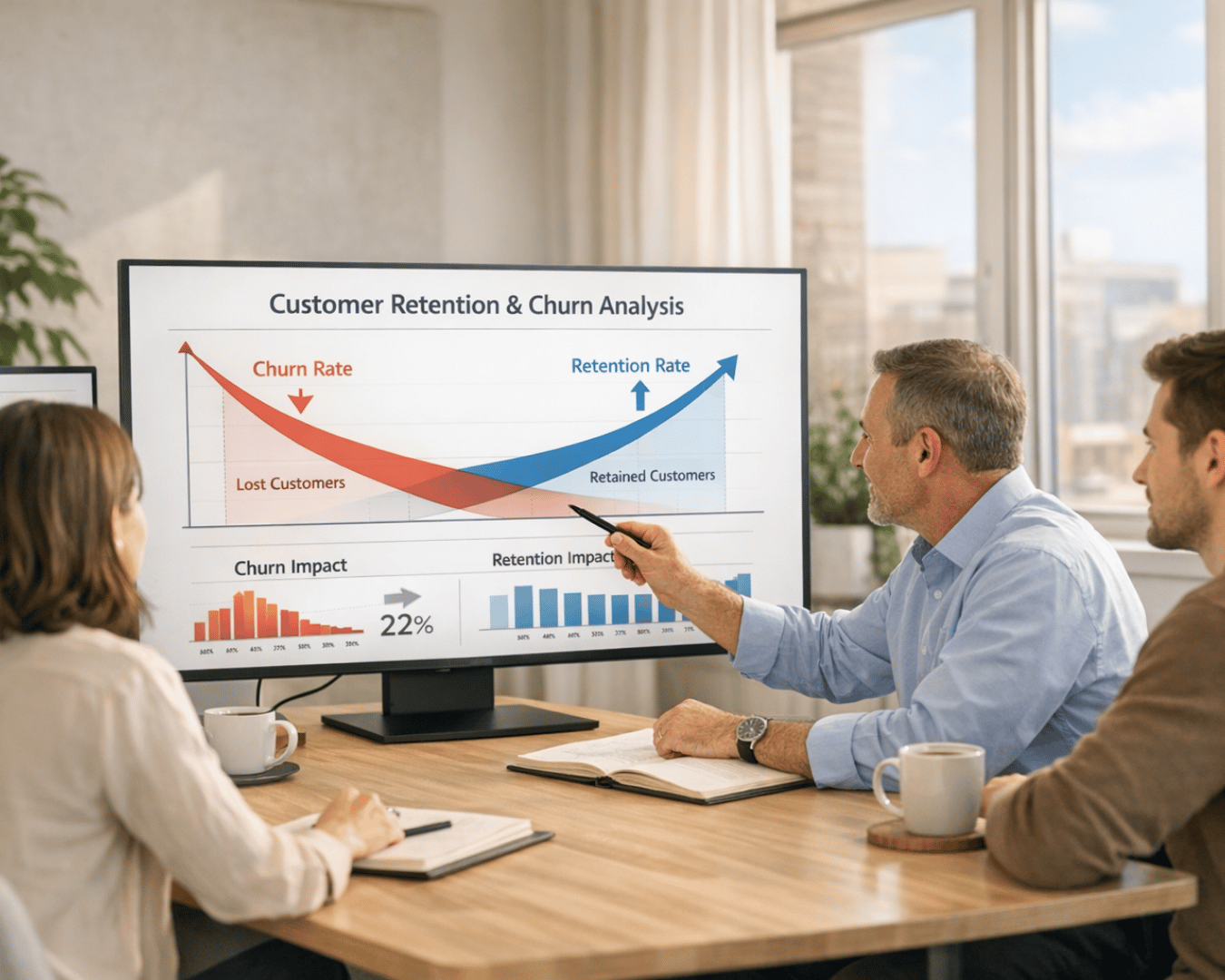










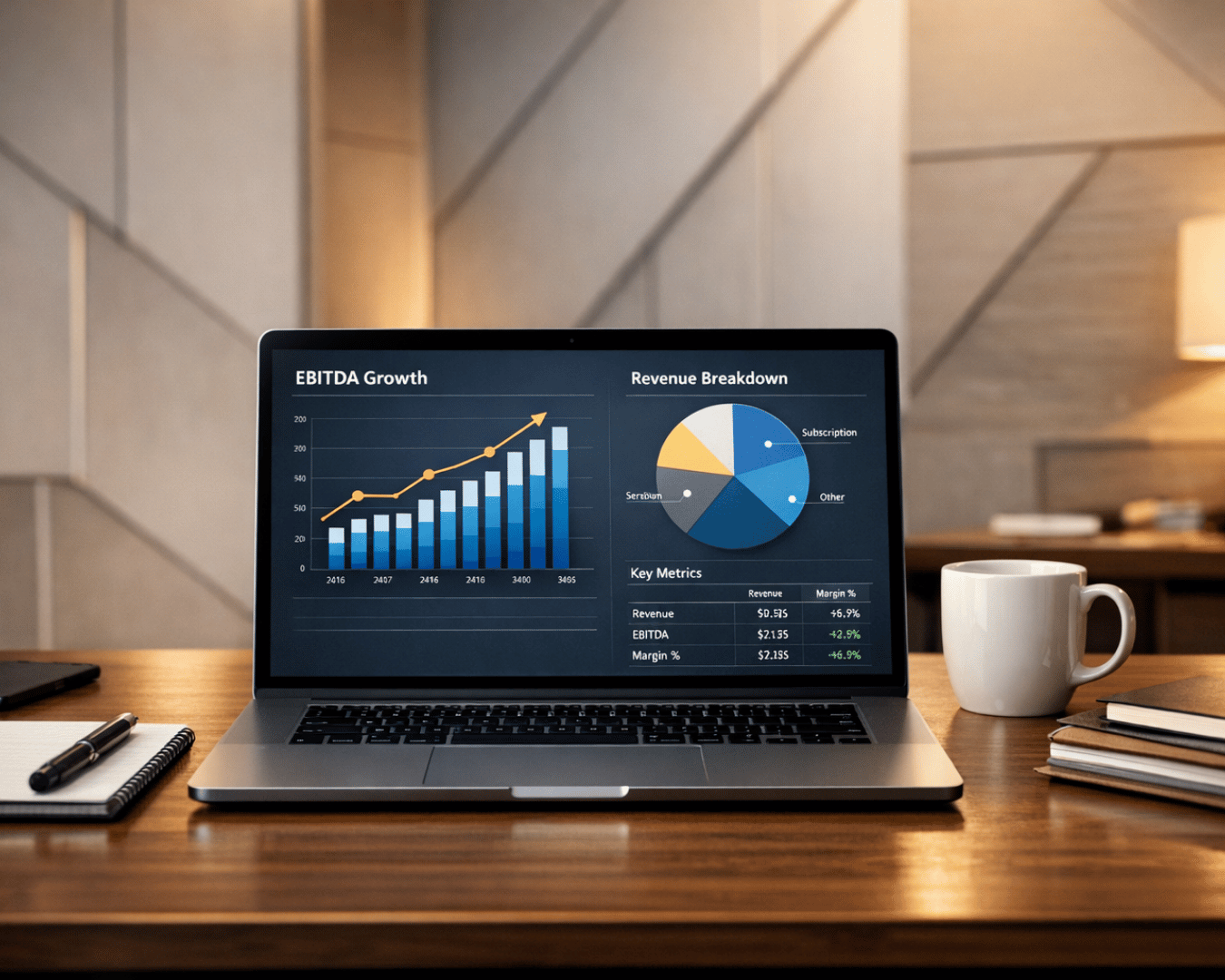










.png)
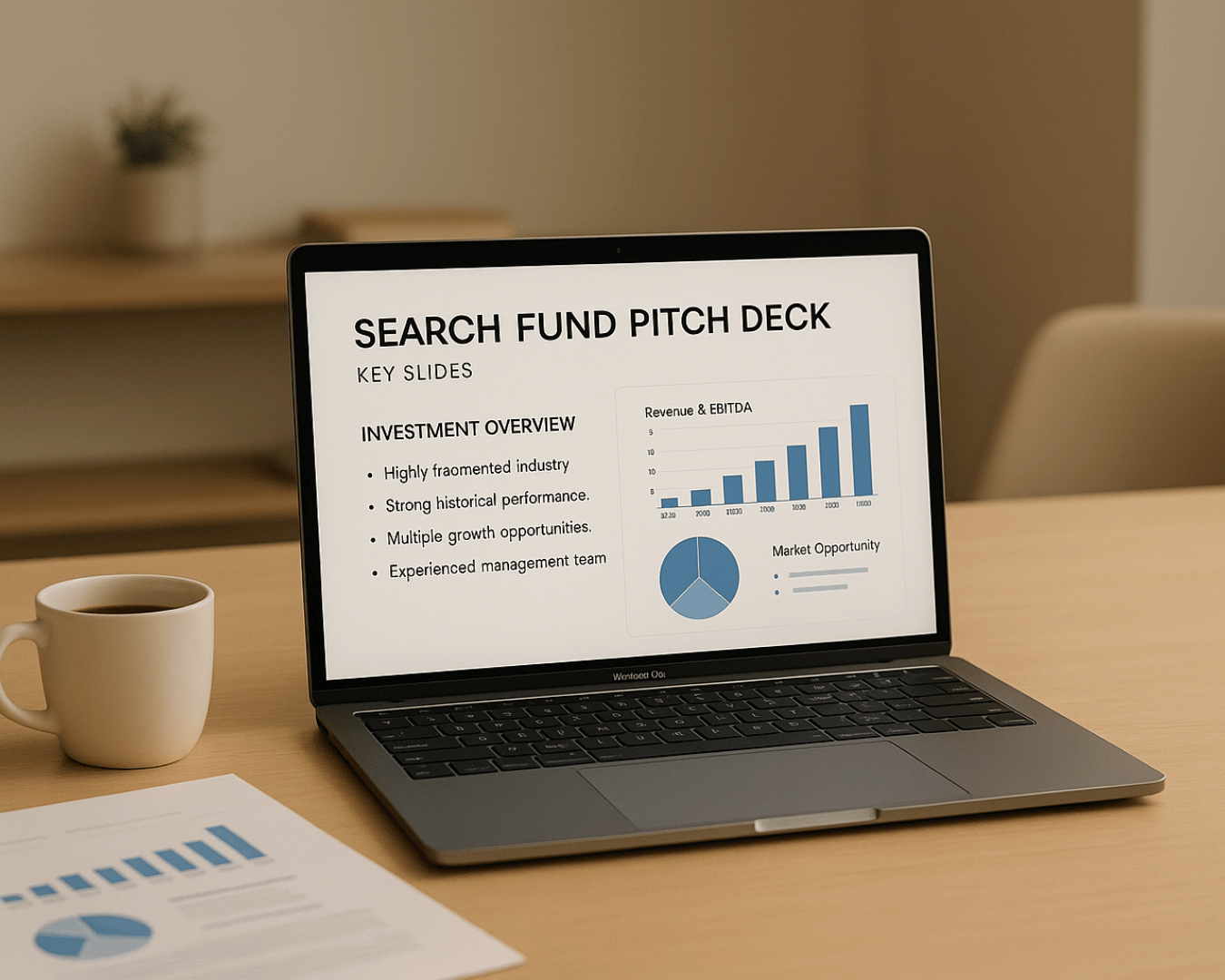






































.png)






